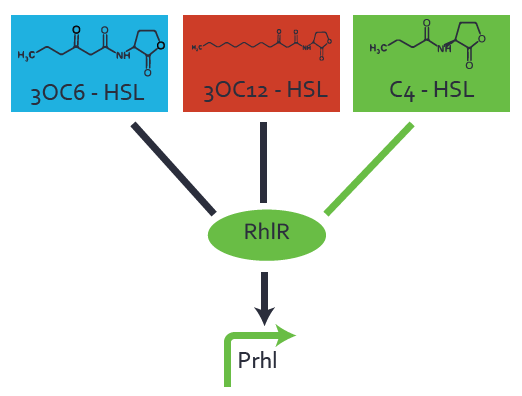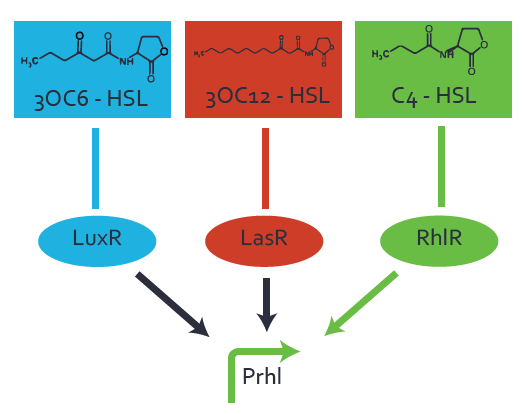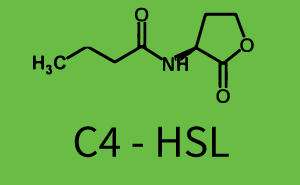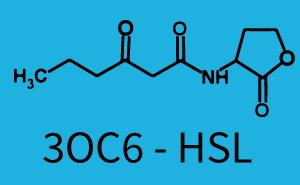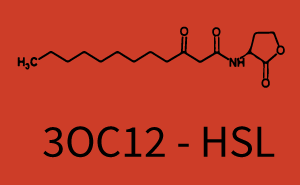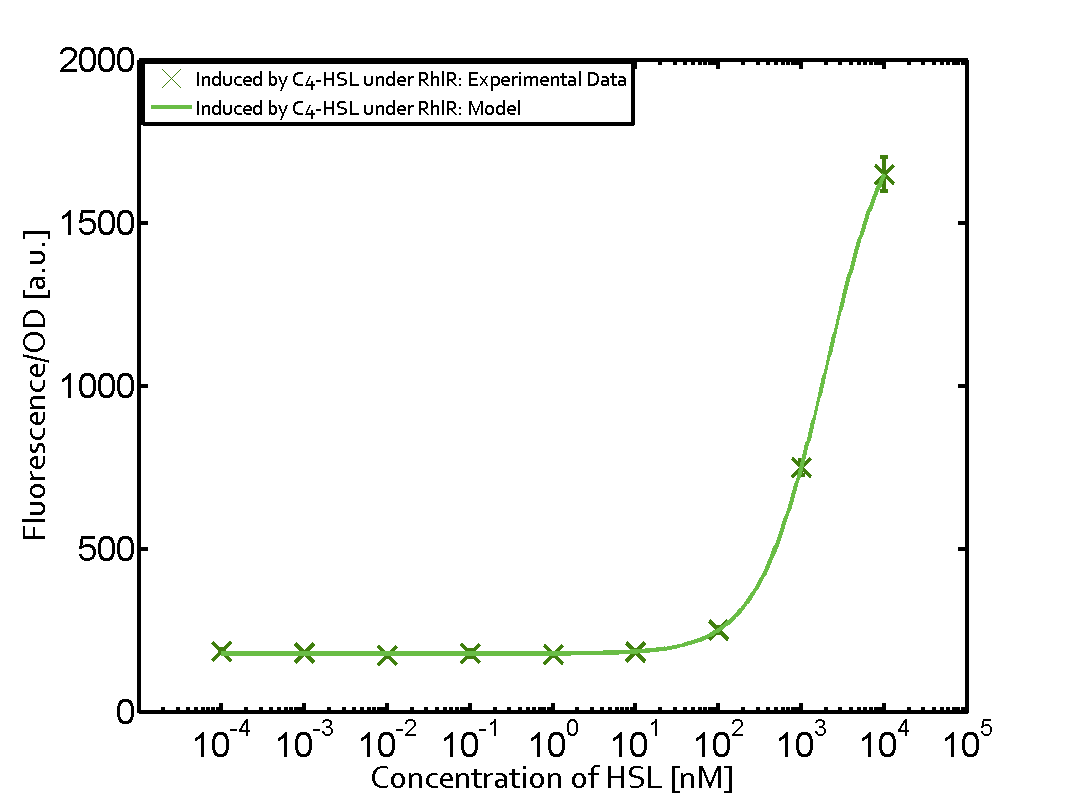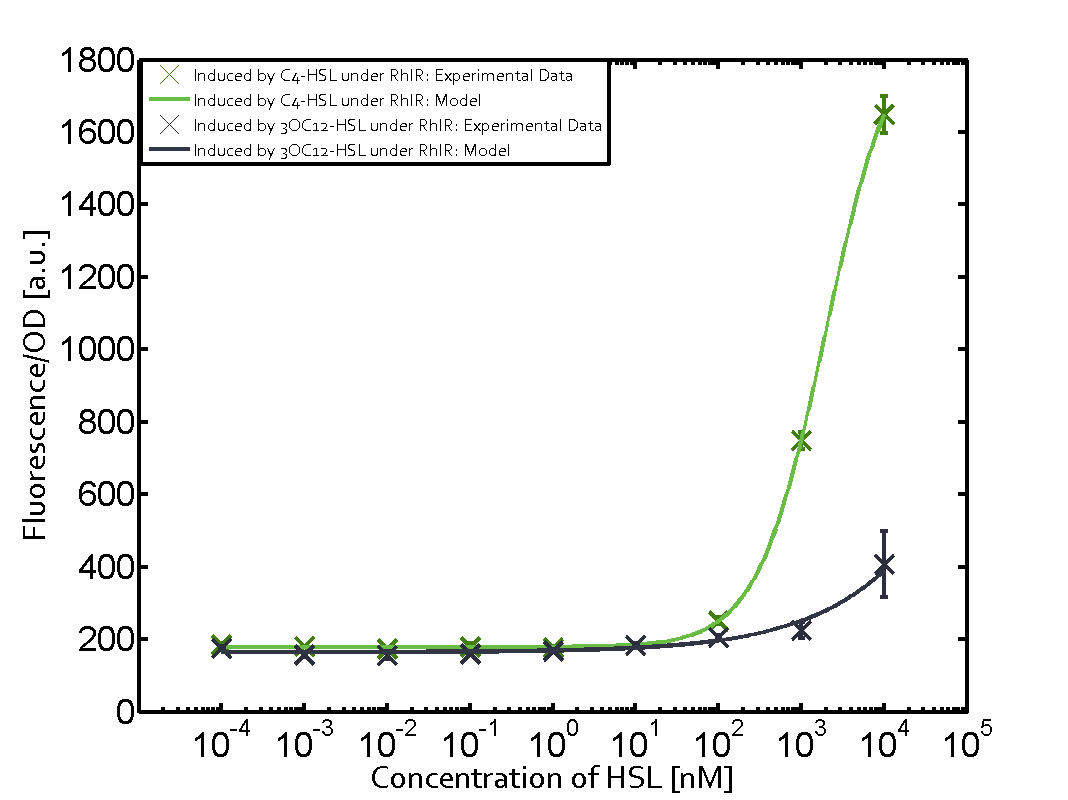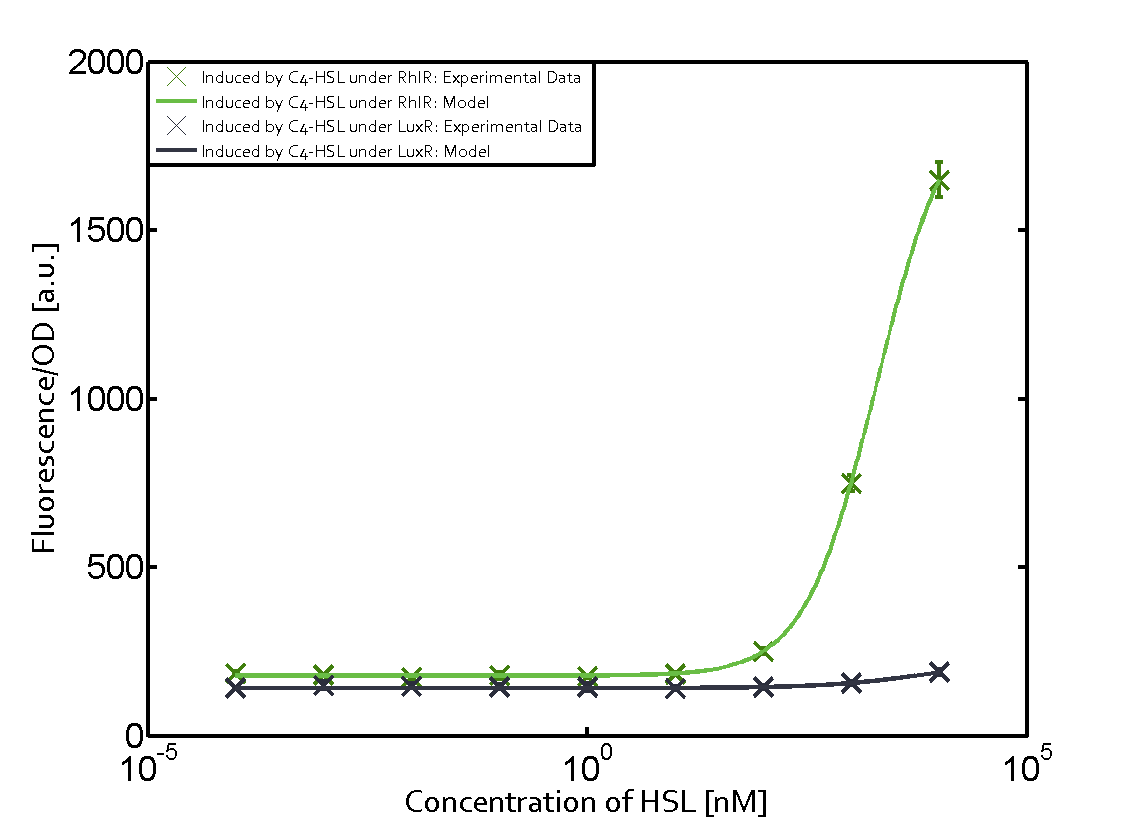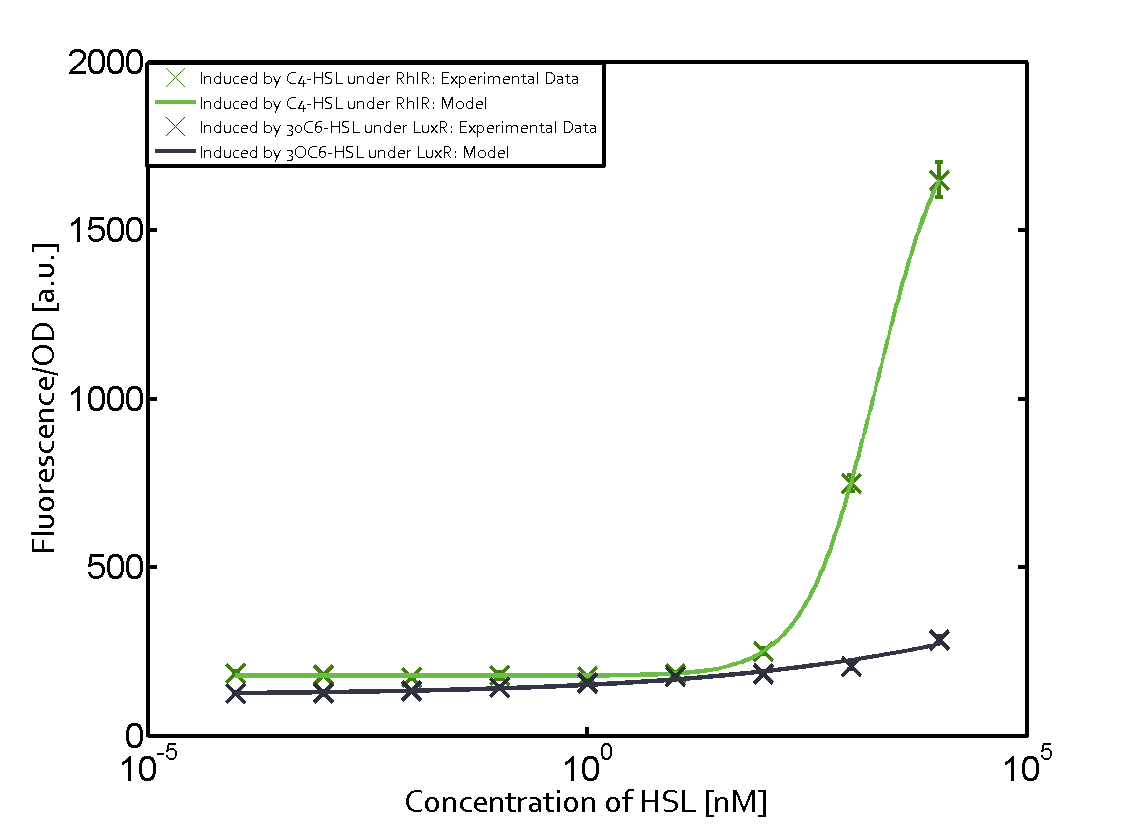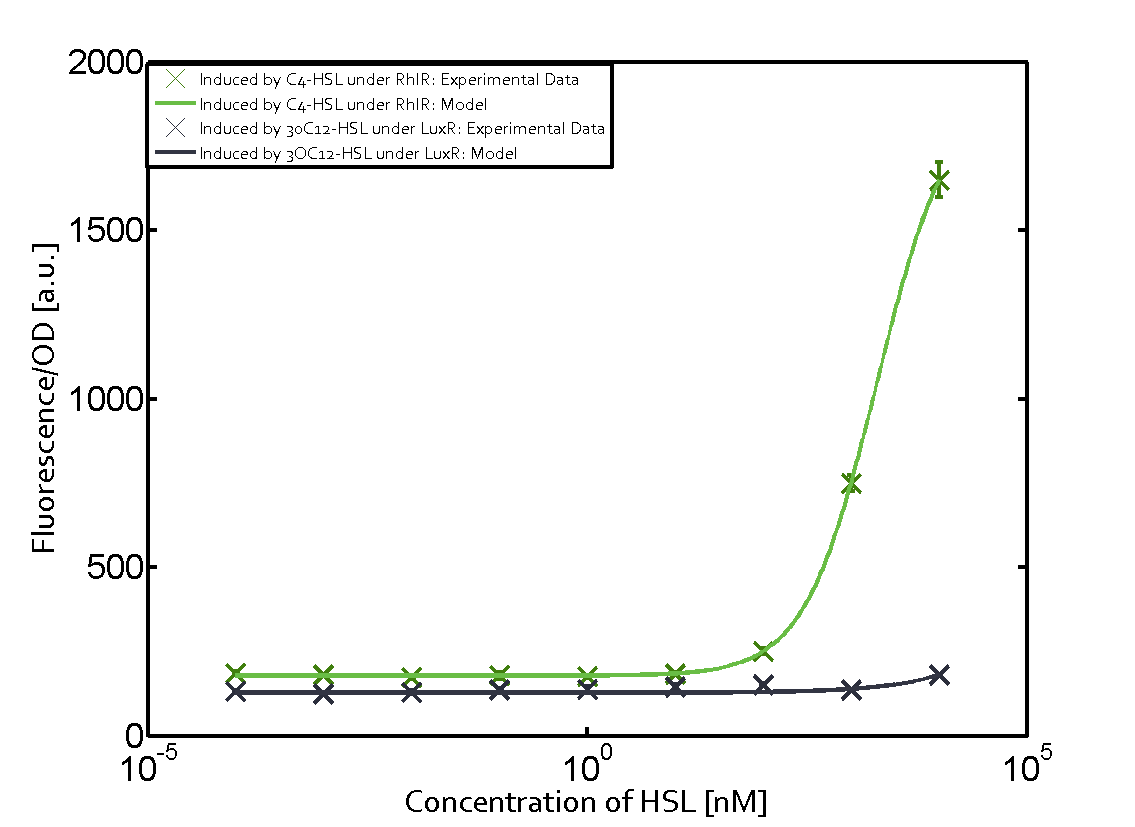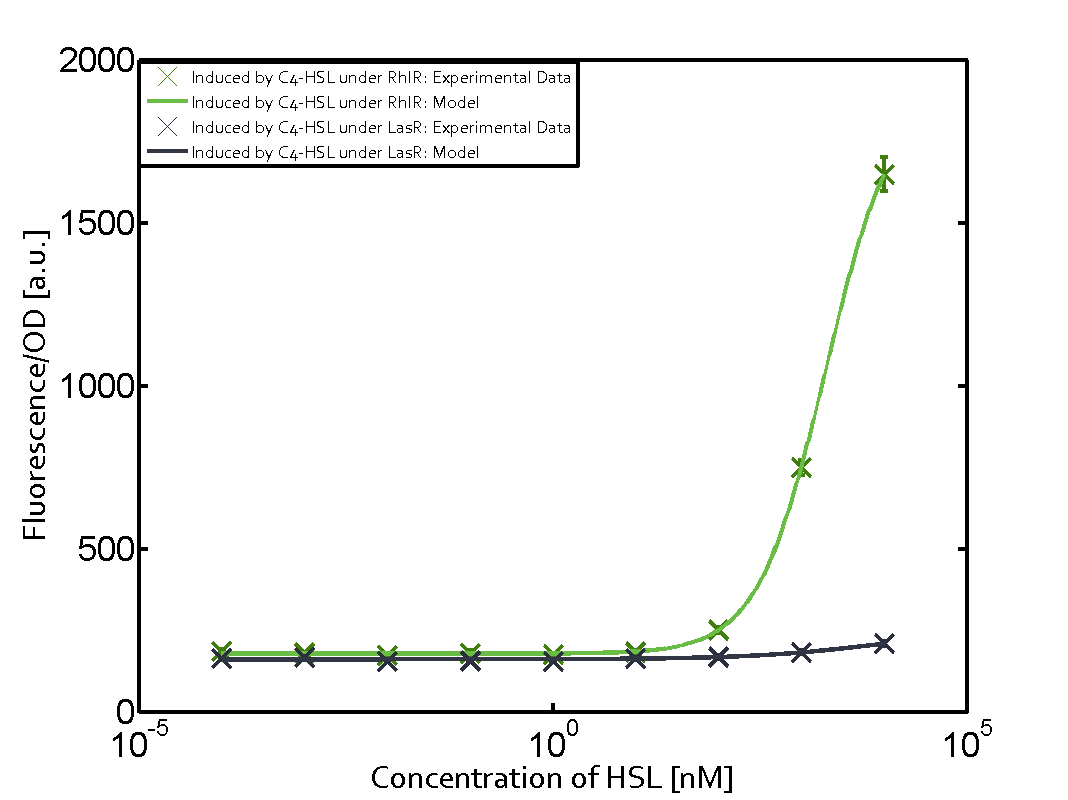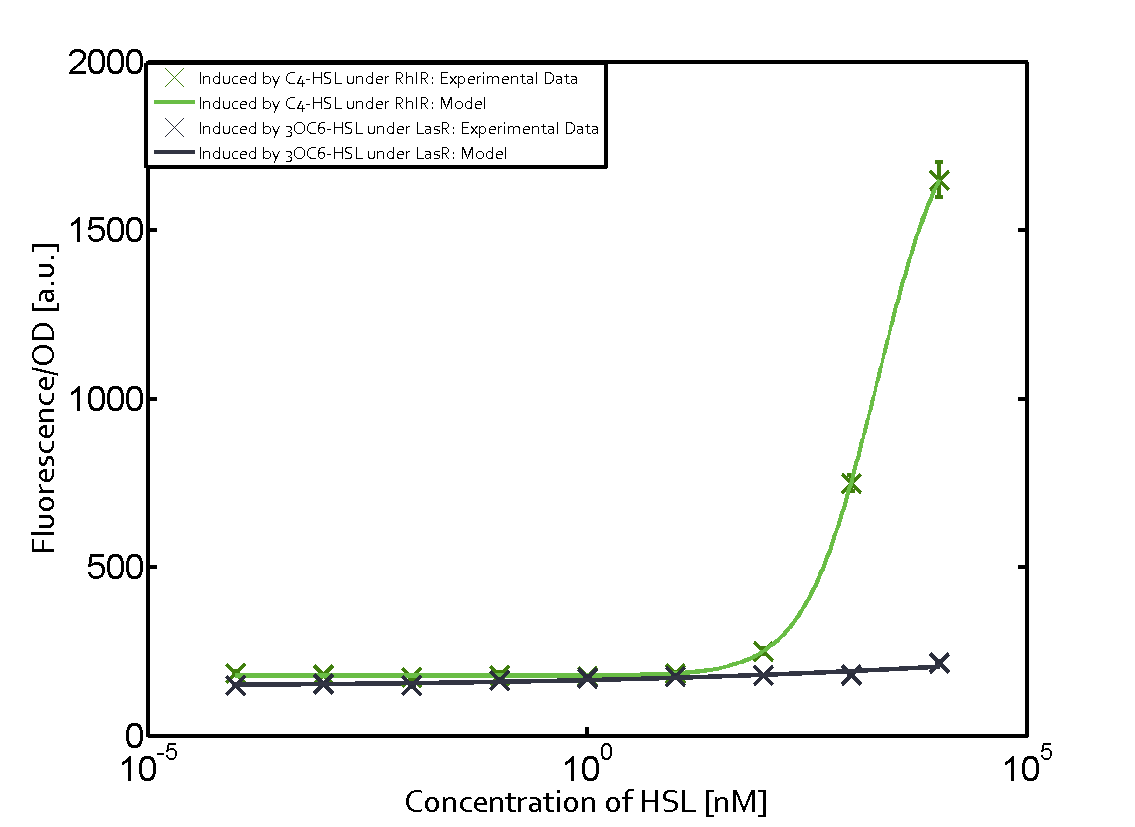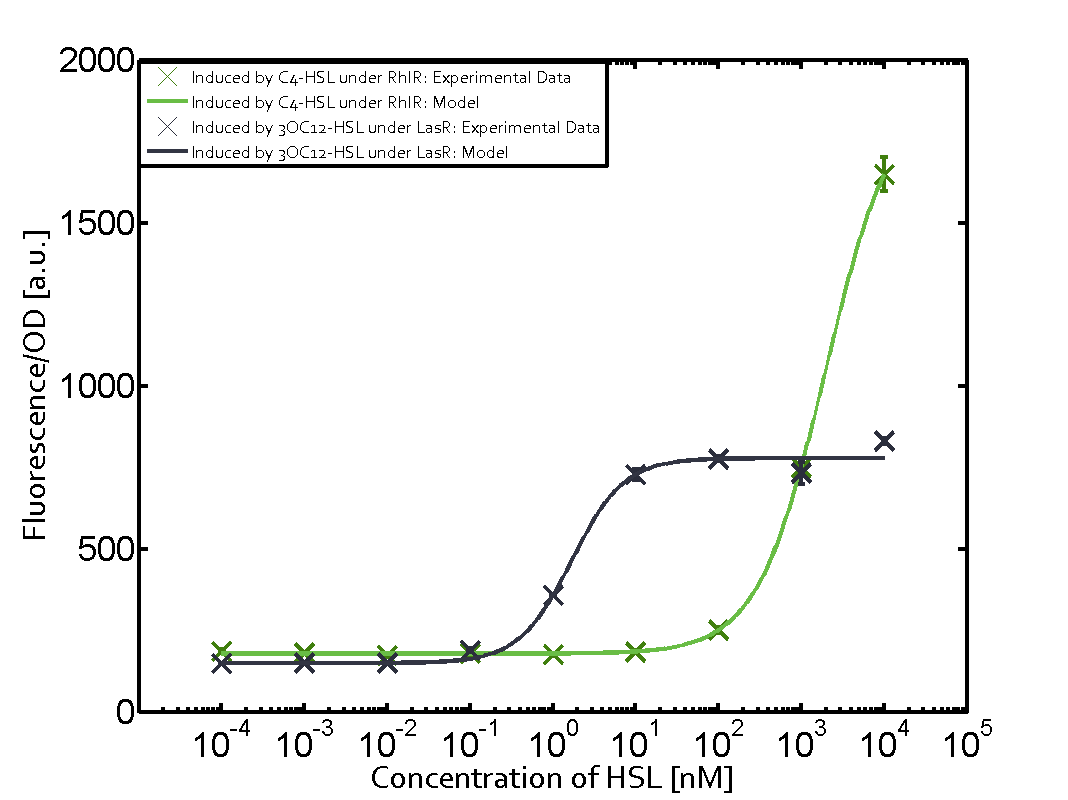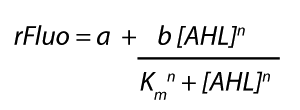Difference between revisions of "Part:BBa I14017:Experience"
(→First-order crosstalk) |
(→Second order crosstalk: Combination of both cross-talk levels) |
||
| Line 47: | Line 47: | ||
== Second order crosstalk: Combination of both cross-talk levels == | == Second order crosstalk: Combination of both cross-talk levels == | ||
| − | + | The second order crosstalk describes unintended activation of [https://parts.igem.org/Part:BBa_R0062 pLux] by a mixture of both the levels described above. The regulator and inducer are being different from [https://parts.igem.org/Part:BBa_C0062 LuxR] and [[3OC6HSL|3OC6-HSL]], respectively, and at the same time they do not belong to the same module. For example, the inducer [[AHL|C4-HSL]] (green), usually binding to the regulator [https://parts.igem.org/Part:BBa_C0171 RhlR], could potentially interact with [https://parts.igem.org/Part:BBa_C0179 LasR] regulator (red) and together activate [https://parts.igem.org/Part:BBa_R0062 pLux] (light blue). This kind of crosstalk is explained in figure 4. | |
| + | |||
| + | [[File:ETH Zurich 2014 2nd order rhl.png|400px|thumb|center| '''Figure 4 Overview of possible crosstalk of the [https://parts.igem.org/Part:BBa_R0062 pLux] promoter with both the regulator and inducer being unrelated to the promoter and each other.''' Usually, [https://parts.igem.org/Part:BBa_C0062 LuxR] together with inducer [[3OC6HSL|3OC6-HSL]] activate their corresponding promoter [https://parts.igem.org/Part:BBa_R0062 pLux] (light blue). However, [https://parts.igem.org/Part:BBa_R0062 pLux] may also be activated by another regulator together with an unrelated inducer. For example, the inducer [[AHL|C4-HSL]] (green) may interact with the [https://parts.igem.org/Part:BBa_C0179 LasR] regulator (red) and together activate [https://parts.igem.org/Part:BBa_R0062 pLux] (light blue).]] | ||
== Results == | == Results == | ||
Revision as of 16:29, 26 October 2014
This experience page is provided so that any user may enter their experience using this part.
Please enter
how you used this part and how it worked out.
Applications of BBa_I14017
User Reviews
UNIQ7f9969303e02403b-partinfo-00000000-QINU
|
••••
ETH Zurich 2014 |
Characterization of two-order crosstalk on the promoterBackground informationThe E. coli strain used and the experimental set-up are described above. However, here we focus on the characterization of crosstalk and as a result we used only one, strong promoter (BBa_J23100) controlling the three different regulators (LuxR, LasR, and RhlR) used in the experiments in order to quantify crosstalk with pRhl. In the following, we describe all the different levels of crosstalk we have assessed. First-order crosstalkIn the first order crosstalk section we describe crosstalk of pRhl due to RhlR binding to inducers different from C4-HSL or pRhl itself binding a regulator-inducer pair different from RhlR-C4-HSL. First Level crosstalk: RhlR binds to different HSL and activates the promoterIn the conventional system C4-HSL binds to its corresponding regulator, RhlR, and activates the pRhl promoter (figure 2, green). However, RhlR can potentially also bind other AHLs and then activate pRhl (figure 2, 3OC12-HSL in red and 3OC6-HSL in blue). Second Level crosstalk: other regulatory proteins, like LuxR, bind to their natural HSL substrate and activates the promoterSecond order crosstalk: Combination of both cross-talk levelsThe second order crosstalk describes unintended activation of pLux by a mixture of both the levels described above. The regulator and inducer are being different from LuxR and 3OC6-HSL, respectively, and at the same time they do not belong to the same module. For example, the inducer C4-HSL (green), usually binding to the regulator RhlR, could potentially interact with LasR regulator (red) and together activate pLux (light blue). This kind of crosstalk is explained in figure 4. 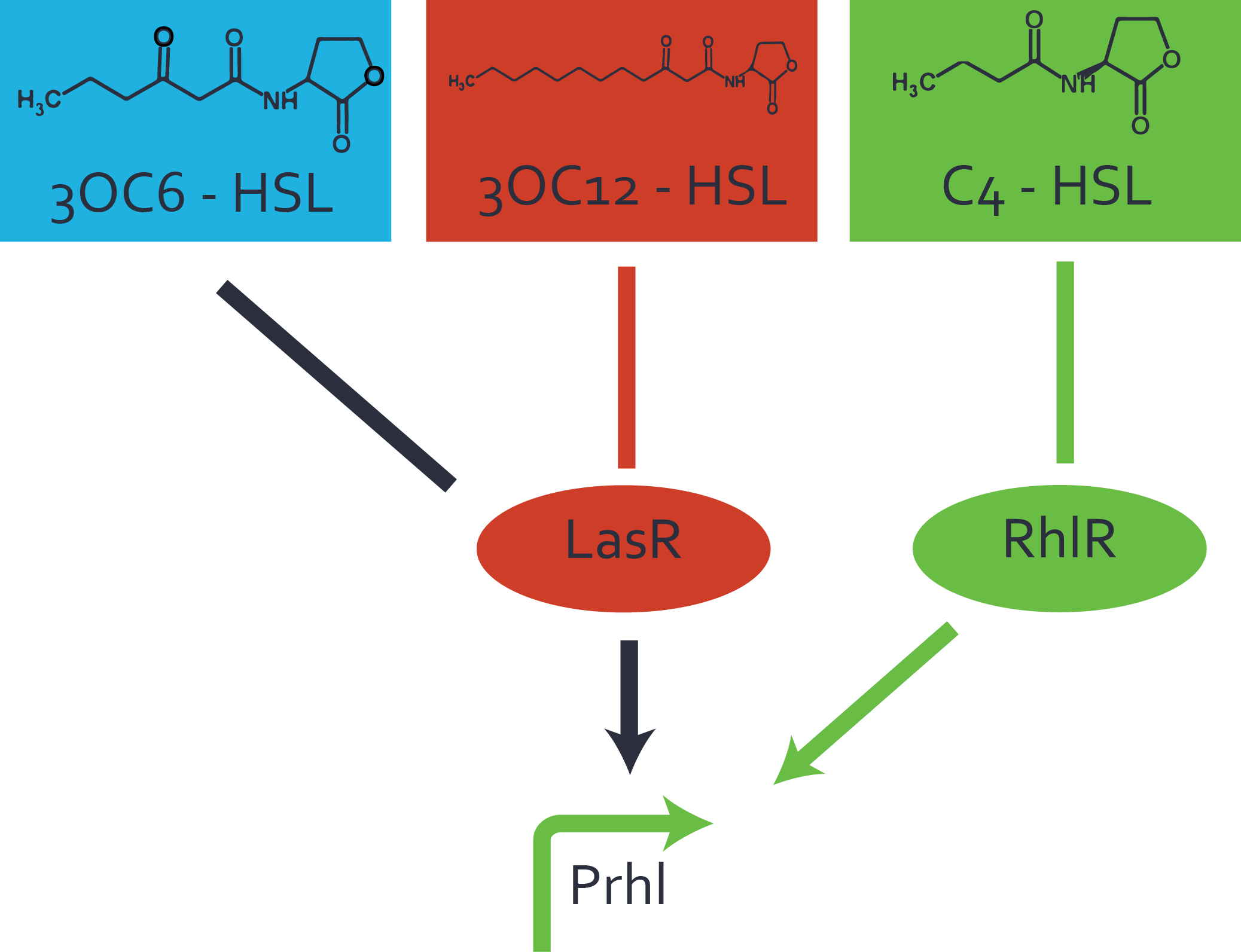 Figure 4 Overview of possible crosstalk of the pLux promoter with both the regulator and inducer being unrelated to the promoter and each other. Usually, LuxR together with inducer 3OC6-HSL activate their corresponding promoter pLux (light blue). However, pLux may also be activated by another regulator together with an unrelated inducer. For example, the inducer C4-HSL (green) may interact with the LasR regulator (red) and together activate pLux (light blue). Results
Modeling crosstalkEach experimental data set was fitted to an Hill function using the Least Absolute Residual method. The fitting of the graphs was performed using the following equation :
| ||||||||||||||||||||||||||||||||||||
|
Antiquity |
This review comes from the old result system and indicates that this part did not work in some test. |
UNIQ7f9969303e02403b-partinfo-00000003-QINU

